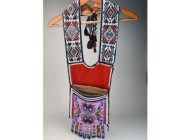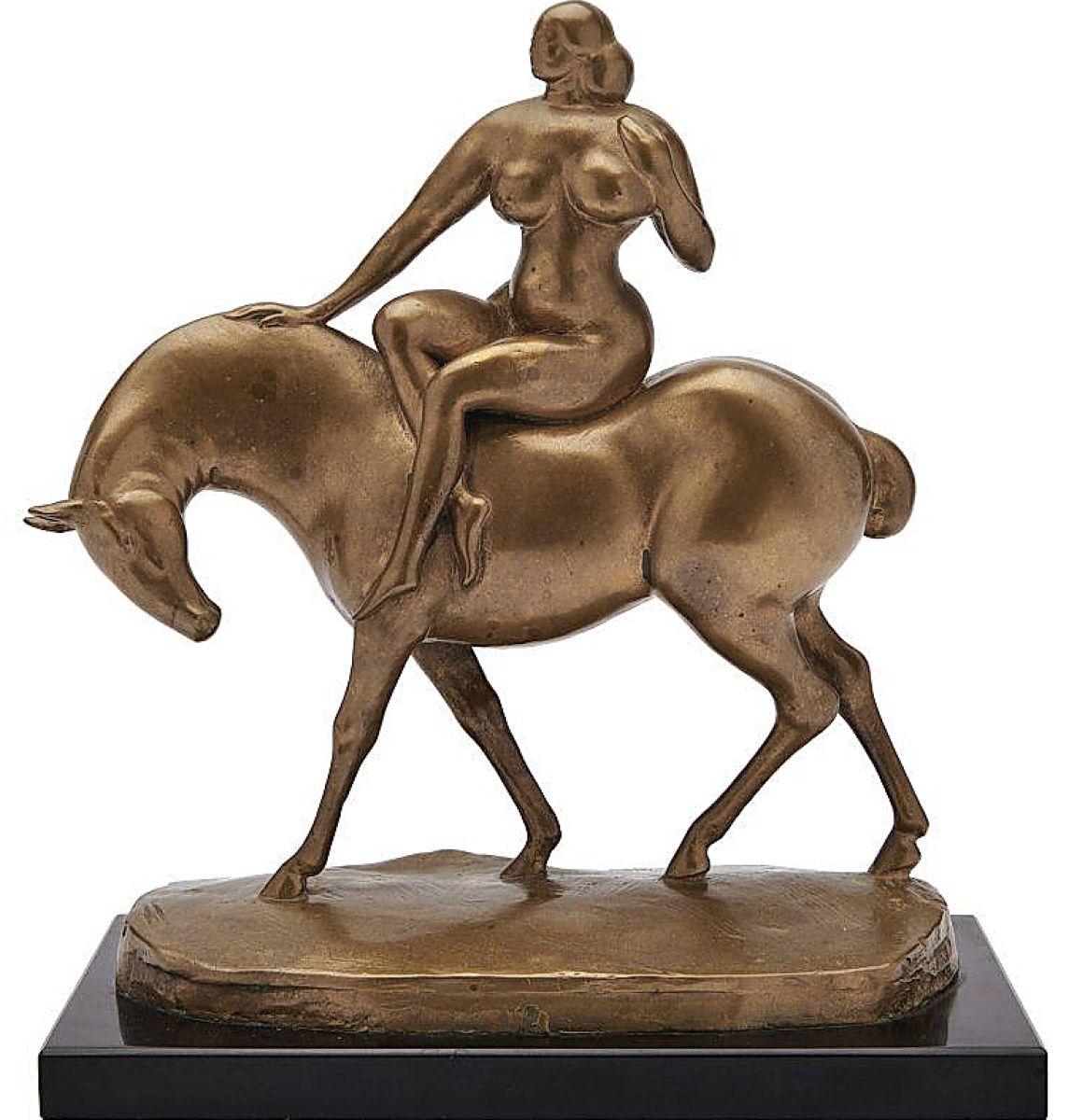
Setting a new record for the form and the star of the sale, “Equestrienne” by Gaston Lachaise sold for $200,000. The 10½-inch bronze was included in several exhibitions. It was signed and dated on the base 1918, and was cast circa 1930-31.
Review and Onsite Photos by Rick Russack, Additional Photos Courtesy Grogan & Company
BOSTON – In a slight departure from the format of recent sales, Grogan & Company used two days for its November 5-6 event. Day one was devoted to fine art, including decorative arts, and day two to jewelry and additional decorative arts. Prior to the sale, Michael Grogan said, “Going to a two-day sale makes sense for us now. It allows us to present everything to its best advantage.”
Offerings on the first day included a single-owner collection of watercolors by Frank Benson, a selection of photographs by Eisenstadt, Abbott, Curtis and others, paintings from well-known artists representing a variety of styles and time periods, exceptional glass by Dale Chihuly, American studio furniture, bronzes and more. Online catalog descriptions by Georgina Winthrop, vice president and fine arts director, were comprehensive. Jewelry offerings included a wide selection of diamonds and colored stones, with pieces by Cartier, Tiffany, Oscar Heyman and watches by Rolex, Patek Philippe and others. Taylor See, jewelry department director, included condition statements with her descriptions. The separately cataloged decorative arts portion of the sale offered early American silver, sterling tableware, a Mucha poster, miniature carvings by Elmer Crowell and Asian items. In each category, there were quality selections to fit any pocketbook. Was it a strong sale? More than 100 lots finished in excess of $10,000 and the total for the two days was $3 million.
Decorative arts were sold on both days and included some of the highest prices of the sale. The star of the sale, earning $200,000 was a 10½-inch bronze of a nude woman on a horse, titled “Equestrienne” by Gaston Lachaise (1882-1935). It was dated 1918, and was cast circa 1930-31. This bronze had been exhibited several times in museums in different parts of the United States. Lachaise was well known for his female nudes, and in 1935 the Museum of Modern Art in New York presented a retrospective exhibition of his work, the first at that institution for any American sculptor. The price achieved set a new record for this bronze.
A few lots before the bronze and selling for $75,000 was a glass topped coffee table with the top supported by two reclining carved wooden dogs. Titled “Proud Dogs,” it had been made by Judy Kensley McKie (b 1944), who was a leading figure of the American studio furniture movement of the 1970s and 1980s. The dogs could be arranged either as shown in the gallery, or with the dogs facing in opposite directions. The table was done in 1985, shortly before McKie started doing most her work in bronze.
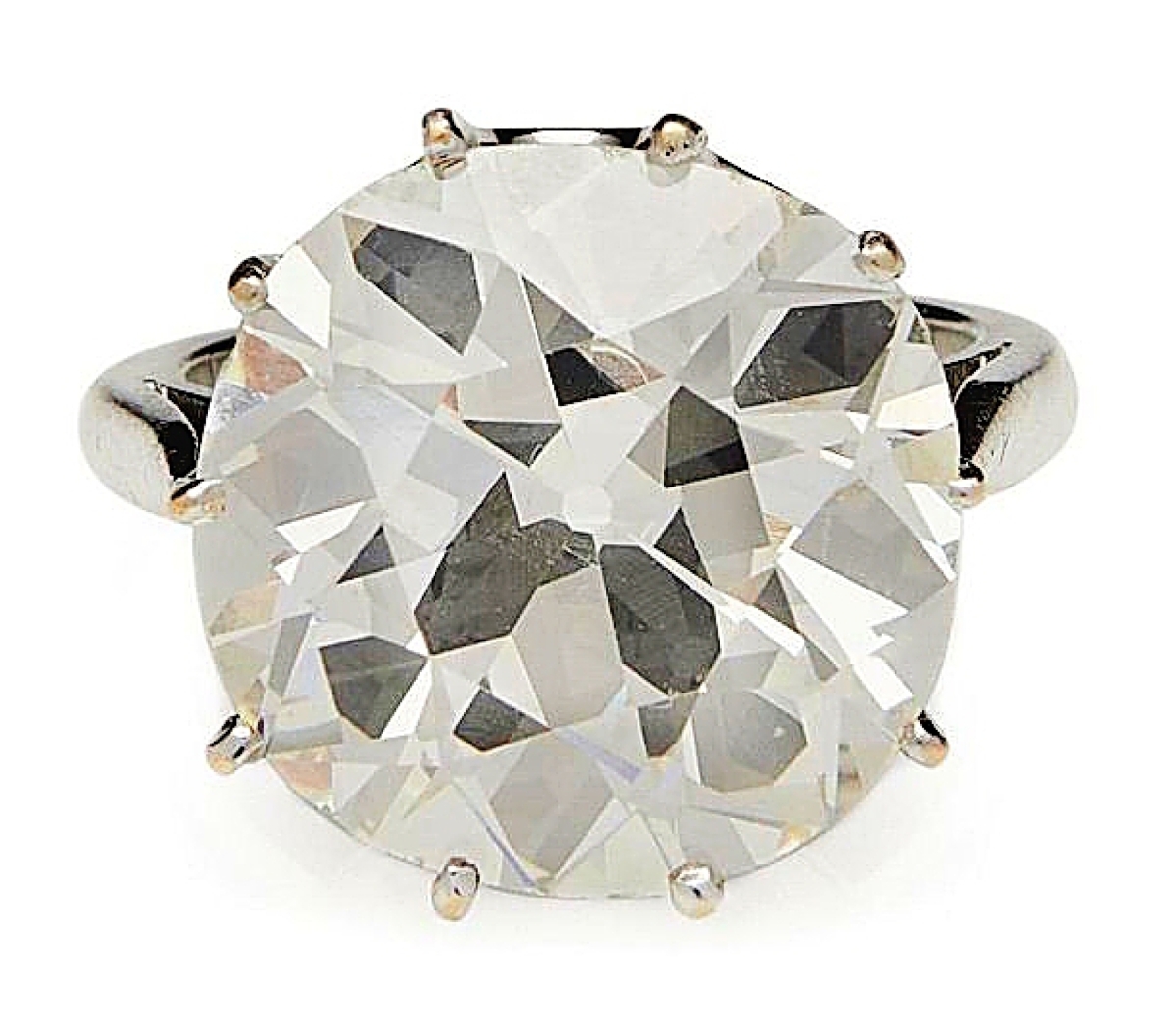
The second highest price of the sale and the highest price of the jewelry offerings was a platinum and diamond ring that brought $193,750. The large 13.79-carat diamond was accompanied by a recent GIA report attesting to the quality of the stone, stating that the diamond was L, VS2, no fluorescence.
The fine art sale got off to a good start. Lots one and two were untitled Abstract Expressionist paintings signed and dated by Giorgio Cavallon (1904-1989). One brought $43,750 and the other brought $50,000, both over estimate. Cavallon was a charter member of the American Abstract Artists and exhibited with that group from its inception in 1936.
Two paintings, one by Alex Katz (b 1927) and the other by Gertrude Abercrombie (1909-1977) tied for the highest price of the painting offerings, finishing at $100,000 each. One was “Ada,” Katz’s wife, an oil on board, signed and dated Alex Katz 64. This painting, as well as five other works in the sale, were from the six-decade collection of Mr and Mrs H.C. Brillhart Jr, Perryton, Texas. Lena Mae Brillhart collected the top Abstract Expressionists of her time, many of whom she knew personally. Winthrop’s catalog entry had an extensive description of this painting and the collector.
Abercrombie’s “Slaughterhouse” was recently rediscovered in the collection of a friend of Abercrombie’s. Abercrombie was involved in the Chicago jazz scene and was friends with musicians such as Dizzy Gillespie, Charlie Parker and Sarah Vaughan. The catalog includes an extensive discussion of the artist.
One of the pleasant surprises, selling for $50,000, five times the estimate, was a self-portrait of Camille Pissarro (1830-1903), an etching done about 1890. It was signed in pencil and had descended in the family of the artist. American paintings included a signed oil on canvas landscape by Alfred Thompson Bricher (1837-1908) of Grand Manan, a Canadian island in the Bay of Fundy, New Brunswick. It realized $68,750. Bringing the same price was “Cows Grazing Under the Oaks,” an 1893 signed oil on canvas by Edward Mitchell Bannister (1828-1901). Another of the American works doing well was a 1777 ink drawing by Benjamin West (1738-1820) of John Singleton Copley. It was titled “Master Copley and His Elder Sister” and had remained in the Copley family until this sale, where it sold unexpectedly well over the estimate, for $31,250.
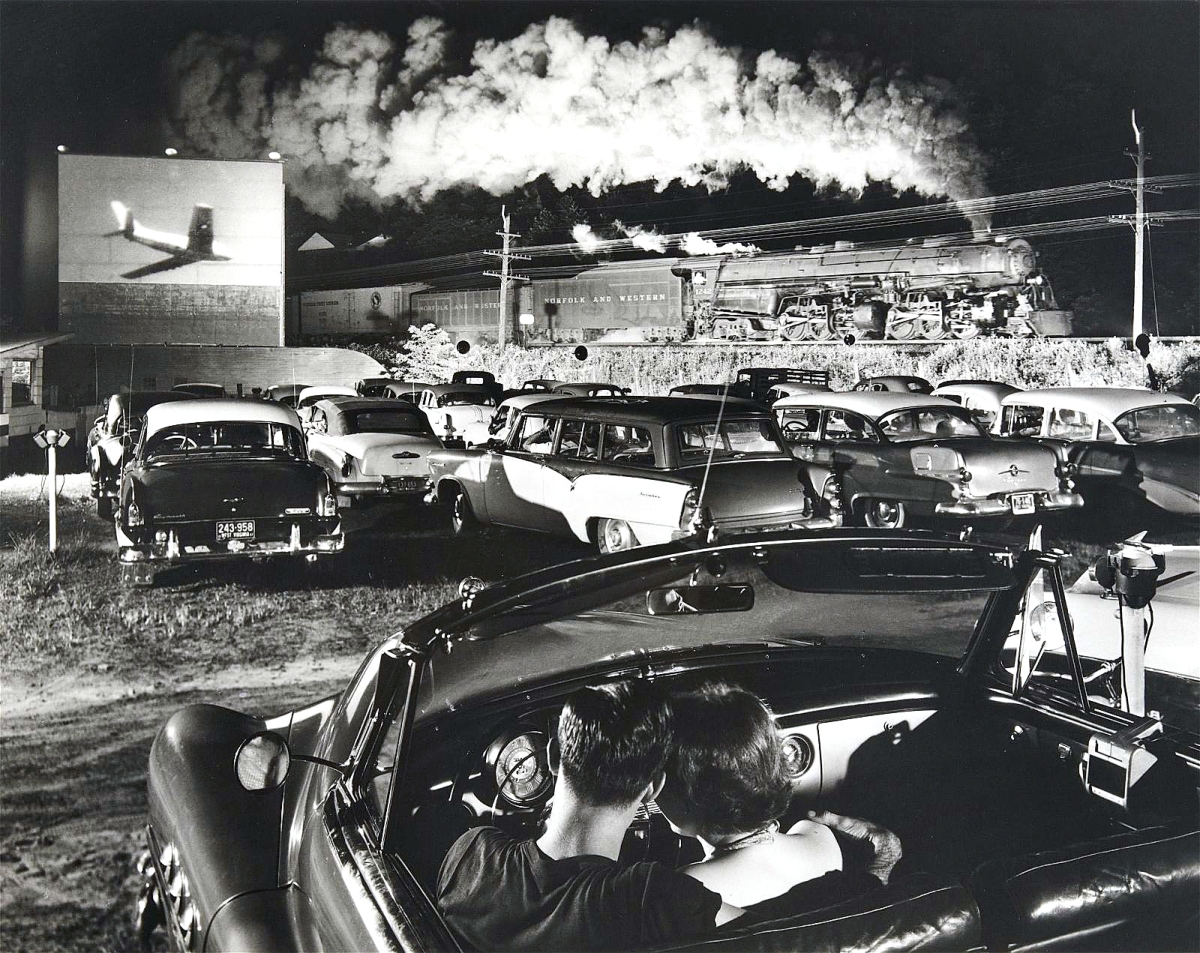
Eight photographs by O. Winston Link of the Norfolk and Western Railroad include this one, depicting the Birmingham Special, at Rural Retreat, Va., which sold for $5,313. Link’s black and white photographs were committed to documenting the last days of steam trains in the late 1950s. He also made sound recordings and most of his work was done along the lines of the Norfolk and Western.
The sale included a single-owner collection of works by Frank Benson (1862-1951), who is perhaps best known for watercolors of outdoor sporting subjects and portraits. But he also did other subjects, as some of the 16 of his paintings in this sale showed. The consignor began collecting the artist’s works about 30 years ago, acquiring examples of varying subjects. Benson lived in Salem, Mass., and had a summer home on the island of North Haven in Maine. He worked in the Impressionist style and was influenced by other Impressionists, such as Claude Monet, and, according to the catalog, some of his works show the influence of Winslow Homer, Edmund Tarbell and Abbott Thayer. Before adopting his impressionistic style, he was well known for his sporting art paintings and etchings. He traveled to the Caribbean, and some of the paintings in this collection depict scenery and people from that area. His sporting subjects were the most popular with bidders, as “Scoters over Water,” signed and dated 1924, brought $34,375.
Impressionist and Modern paintings were topped by “La Belle Gretchen,” a portrait by Jacqueline Marval (1866-1932), which sold for $56,250. “The Awakening” by Edward Alfred Cucuel (1875-1954) earned $37,500, and a 1914 watercolor landscape by John Marin (1870-1953) earned $34,375.
Grogan & Company sales always include a strong section of jewelry, this time including a platinum and diamond ring that brought $193,750, the second highest price of the sale. The 13.79-carat diamond was accompanied by a recent GIA report attesting to the quality of the stone, stating that the diamond was L, VS2, no fluorescence. L color diamonds have a yellow tint that’s visible to the naked eye and VS2 stones have inclusions. The unusually large size of the stone more than compensated for the slight flaws. An unusual convertible platinum necklace by Oscar Heyman and Brothers, circa 1954, sold for $71,875. The necklace, which could easily be converted to two bracelets, comprised green, blue, pink and yellow sapphires, each separated by two round, brilliant cut diamonds. The sales always include jewelry from “name” designers. One of the Cartier pieces was an 18K gold, platinum and gem-set Tutti Frutti brooch dating to the late 1920s. It was in the form of a fish with the body and fin of carved sapphires and the tail pave-set with old European and old mine-cut diamonds. It was decorated throughout with cabochon emerald, sapphire and ruby beads and it earned $46,875.
While some expensive pieces of jewelry were highlights, there were about 50 pieces that sold for less than $2,000. These offerings included Rolex watches and designer pieces by Tiffany, Cartier, Fouquet and others.
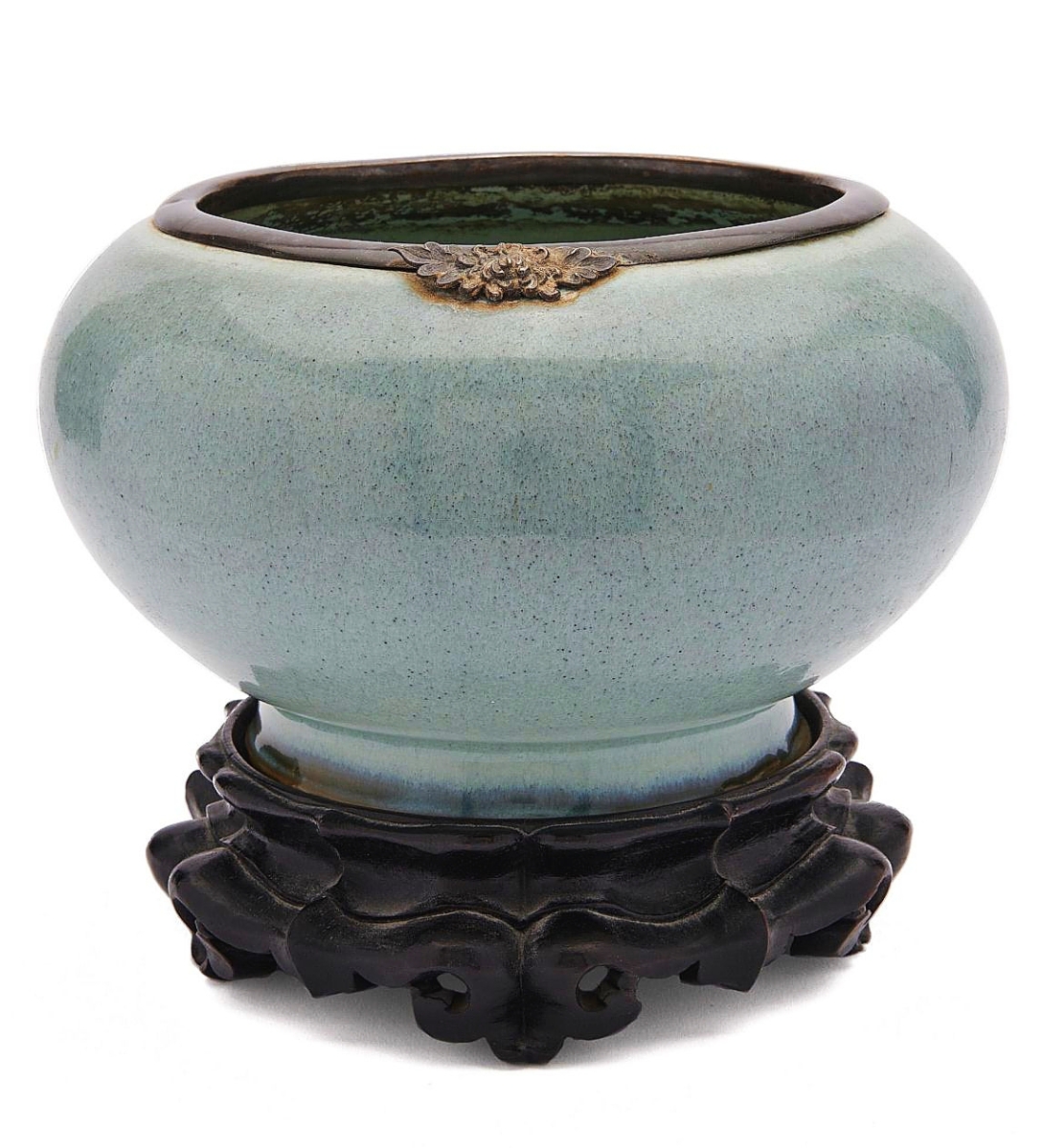
The description of this Chinese bowl was simple: “Chinese powder blue glaze footed pot with silvered metal rim.” And the estimate was low. Bidders liked it and it sold for $34,375.
The separately cataloged decorative arts portion of the sale included early American silver, a variety of sterling dinner services and tableware and Asian items. Estimating selling prices of quality Asian items accurately can be tricky for all auctioneers. This sale included items that fell into that category, with prices substantially exceeding estimates. A Chinese powder blue glaze footed pot with silvered metal rim sold for $34,375. Another example would be two Nineteenth Century Tibetan thangkas that sold for $20,000. One panel depicted a large seated figure, and the other had multiple vignettes.
A pair of Paul Revere sugar tongs, twice marked Revere and with the initials IBH, for Isaac and Betsy Howe, realized $18,750. Revere of the midnight ride was the son of a silversmith and father of Paul Revere Jr, also a silversmith. The pair of sugar tongs remained in the Howe family until being consigned to this sale. Flatware services included an almost complete service for 12 by Tiffany in the Audubon pattern, which sold for $13,750, and a Georg Jensen Cactus pattern service for 12, with additional serving pieces, which sold for $11,250. There were 127 pieces in all, designed by Gundorph Albertus. A heavy Mexican silver six-piece coffee and tea service earned $5,938. Another tea and coffee set, by Tiffany, with five pieces on a silverplated tray, went out for $3,438. There were more than 100 lots of silver in the sale.
Both Michael Grogan and Georgina Winthrop said they were pleased with the sale’s $3 million gross. Grogan said, “We’re seeing the trend continue. The bulk of our offerings go to the end users. Most of the invoices we’re sending out have one or two items. That says to me that people are buying for themselves and they’re being very selective. I’m continuing to see customers from all over the country and some foreign countries as well. So I’m pleased – we’re reaching the audience we want to reach.” Winthrop added, “It was strong across the board – Chihuly did well, the Gaston Lachaise bronze was a new world record for that form, and I was really glad to see the Abercrombie painting do so well. It’s about time that she gets the recognition she deserves. Photographs did well, we didn’t pass many items and the overall gross was wonderful.”
Prices given include the buyer’s premium as stated by the auction house. For more information, www.groganco.com or 617-720-2020.



































